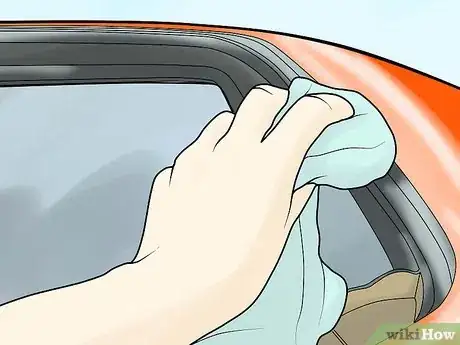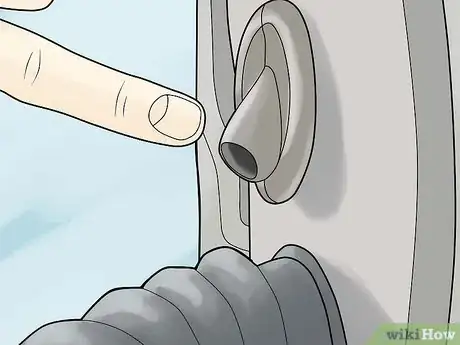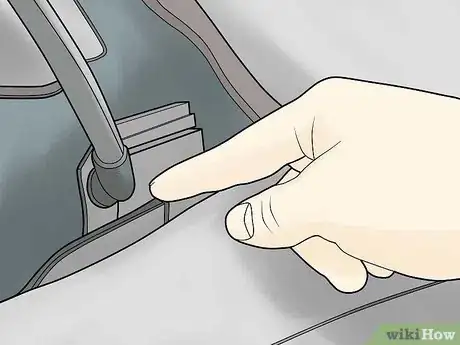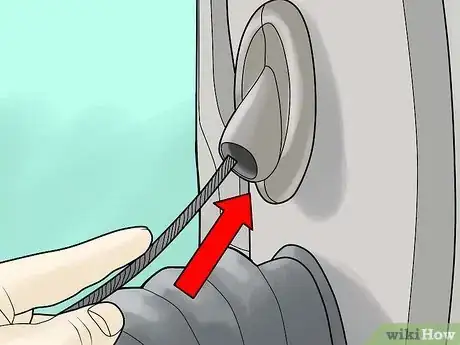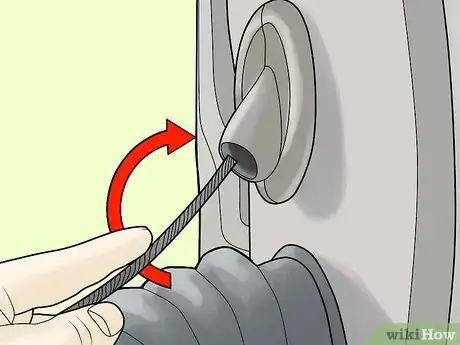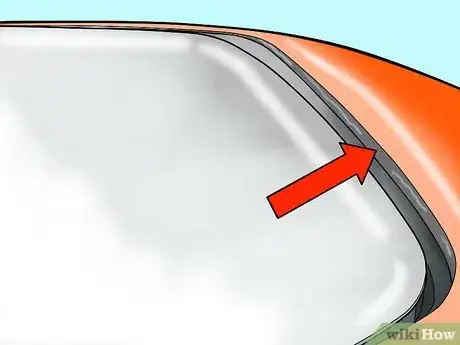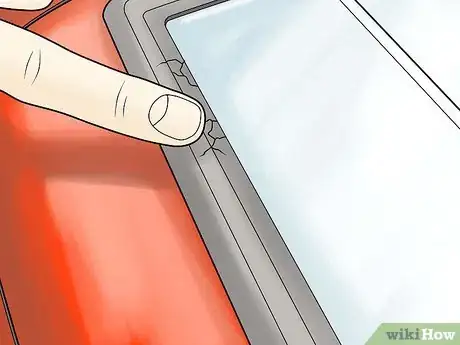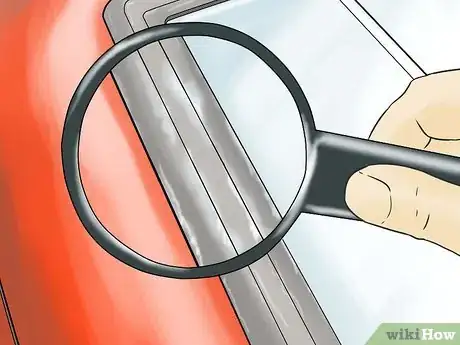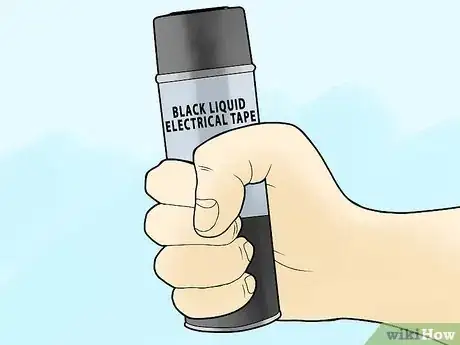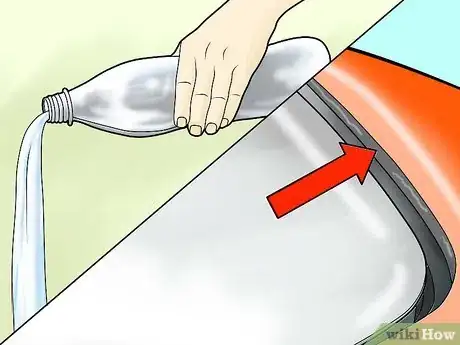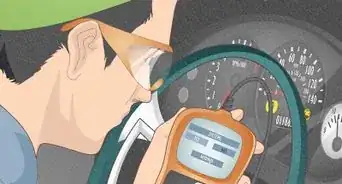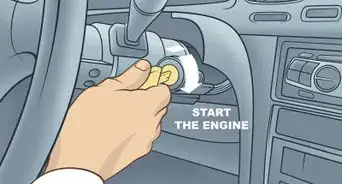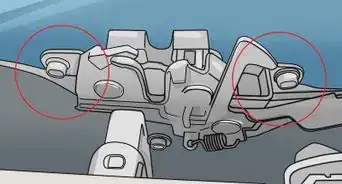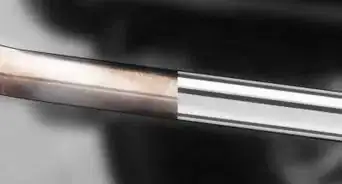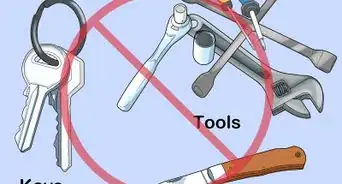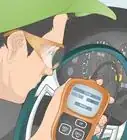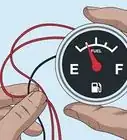This article was co-authored by wikiHow Staff. Our trained team of editors and researchers validate articles for accuracy and comprehensiveness. wikiHow's Content Management Team carefully monitors the work from our editorial staff to ensure that each article is backed by trusted research and meets our high quality standards.
There are 8 references cited in this article, which can be found at the bottom of the page.
This article has been viewed 318,457 times.
Learn more...
Whether it's dripping or gushing water, a sunroof leak can create a mess and damage your car's interior. While you may assume that the rubber seal on your sunroof is damaged and needs repair, oftentimes the culprit isn't the seal at all. Instead, check the tiny holes at the edges of the sunroof seal for clogs.
Steps
Cleaning Drain Tubes with Air
-
1Clean the sunroof trough, located just inside the rubber seal. It is designed to catch water that gets through the sunroof. Wipe it with a cloth to remove any visible debris on the seals and edges of the sunroof.[1]
-
2Locate the sunroof drain tubes. These are very small holes, usually at the corners of the sunroof just under the seal.Advertisement
-
3
Cleaning Drains with Metal Wire
-
1Insert a skinny flexible metal wire in a drain tube. A bicycle brake line works very well to clean sunroof drain tubes -- it is the perfect diameter and has just the right flex to make its way down through the tubes. Clean each drain hole you find near the sunroof base.[4]
-
2Twist the wire clockwise and then counterclockwise while pushing it deeper into the drain tube. The wire should move with little resistance through the tube and push any small dirt or debris particles out as it continues.[5]
- Take care not to damage the drain tubes with the metal rod. If you feel a lot of resistance even after twisting the metal wire, do not push it any further. If this happens, you will need to have a professional clean the drain tubes.
-
3Close the sunroof and pour water over the glass.[6] Check for leaks inside the car. If there are still leaks, proceed to the next step.
Fixing the Seal
-
1Look for cracks or jagged edges along the sunroof seal. Some seals will slowly dry out and crack over time due to exposure to extreme hot and cold temperatures.
-
2Scan the area around the seal for any pooling water or mold. Some seals will sag or lose their shape, causing water to build up in the seal's trough. When the water pools, it can eventually create holes in the seal.
-
3Apply black liquid electrical tape to the seal. Brush a thick layer of the liquid electrical tape on, making sure it covers cover any visible wear. The tape dries to form a protective, waterproof barrier. Press the tape down around the seal. Let it dry following the liquid tape manufacturer's directions.
-
4Close the sunroof and pour water over the top again. Check inside the car to see if you still have leaks.
-
5Take the vehicle to a professional service provider if you continue to have problems with the sunroof. Leaks that are not associated with the drainage tubes or seals are usually factory flaws that can only be fixed by installing a new sunroof.
Community Q&A
-
QuestionWhat seal can I use for a 2004 Lexus LX sunroof?
 Community AnswerYou should use a flex seal. It's an aerosol can spray that seals anything to make it completely waterproof, but it is still flexible.
Community AnswerYou should use a flex seal. It's an aerosol can spray that seals anything to make it completely waterproof, but it is still flexible. -
QuestionHow do I seal a leaky sunroof?
 Community AnswerIt depends on the style of sunroof you have. Some have replaceable seals, while others need to have the glass replaced as the seal is non replaceable or not designed to be.
Community AnswerIt depends on the style of sunroof you have. Some have replaceable seals, while others need to have the glass replaced as the seal is non replaceable or not designed to be. -
QuestionWhere are the drain tubes located on a 2004 Buick Rainier?
 Community AnswerYou can find the drain tube outlets inside the wheel wells on all 4 corners. There are 'nipples' that keep bugs and debris from entering the tubes and clogging them from the outside and they don't protrude very far out from the inside of the fender well. Up top, they are located in the rack with the front two being accessible with the roof open. Do not blow compressed air through these holes! The drain tubes are plastic until they meet up behind the dash to the rubber hose that runs out of the car. Compressed air can separate these lines and then you WILL have water inside your vehicle. Access to the connection is normally through pulling the dash apart to get at them in the front.
Community AnswerYou can find the drain tube outlets inside the wheel wells on all 4 corners. There are 'nipples' that keep bugs and debris from entering the tubes and clogging them from the outside and they don't protrude very far out from the inside of the fender well. Up top, they are located in the rack with the front two being accessible with the roof open. Do not blow compressed air through these holes! The drain tubes are plastic until they meet up behind the dash to the rubber hose that runs out of the car. Compressed air can separate these lines and then you WILL have water inside your vehicle. Access to the connection is normally through pulling the dash apart to get at them in the front.
References
- ↑ https://info.glass.com/how-to-fix-a-sunroof-leak/
- ↑ https://youtu.be/L7S0E4xYdqU?t=104
- ↑ https://www.familyhandyman.com/automotive/how-to-fix-a-leaking-sunroof/
- ↑ https://www.familyhandyman.com/automotive/how-to-fix-a-leaking-sunroof/
- ↑ https://www.readersdigest.ca/cars/maintenance/how-fix-leaking-sunroof/
- ↑ https://youtu.be/L7S0E4xYdqU?t=202
- https://www.youtube.com/watch?v=1CiqO11FtvQ
- http://www.sunroofs.org/faq.htm#factory
- https://www.volvo-forums.com/threads/how-to-fix-a-leaking-sunroof.32457/
